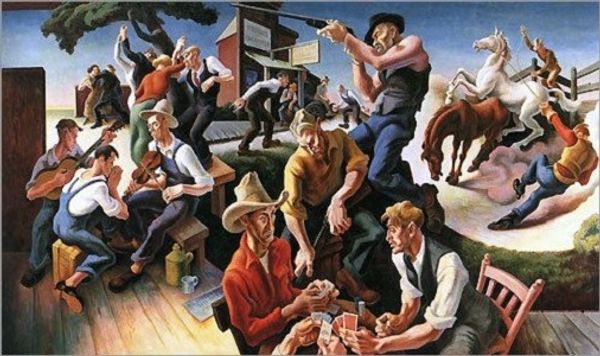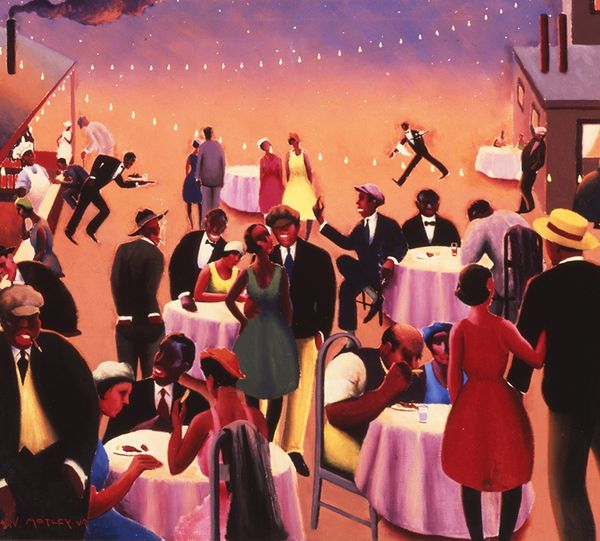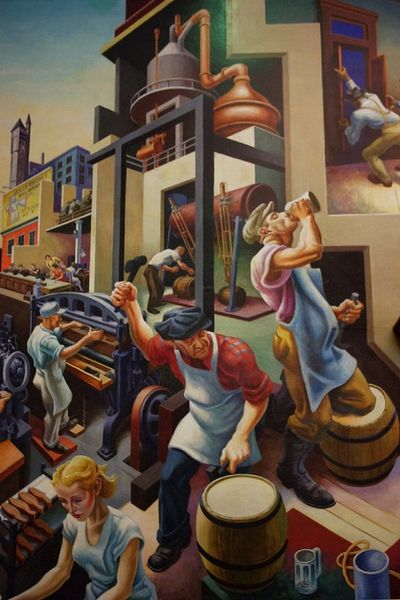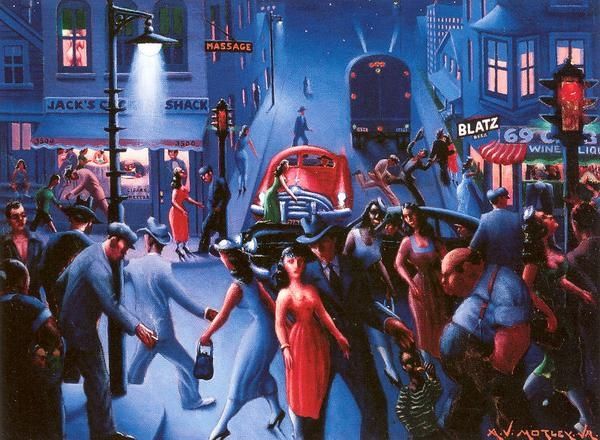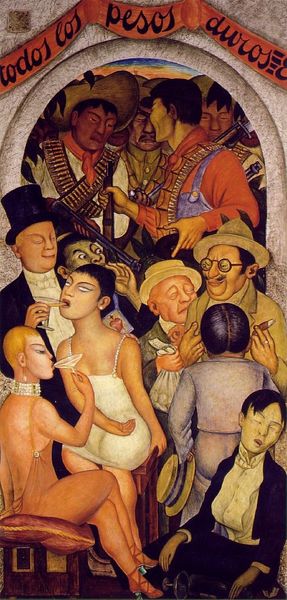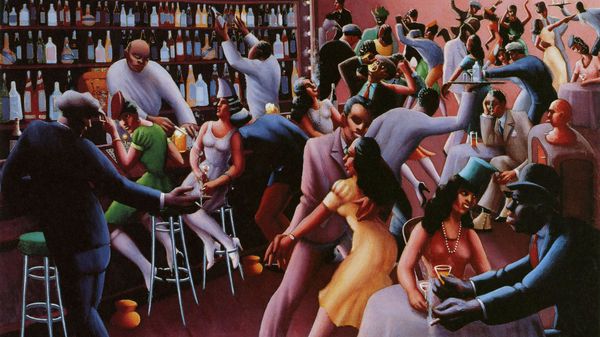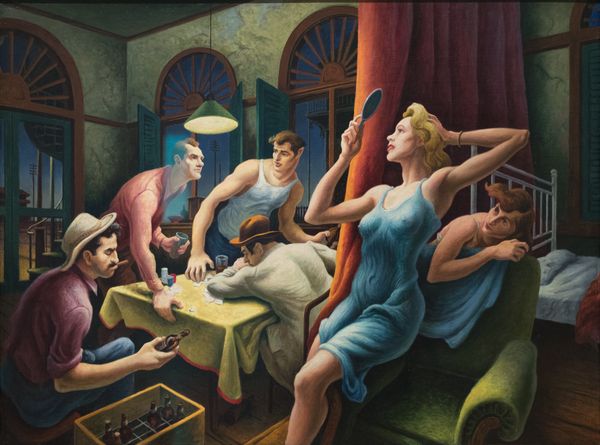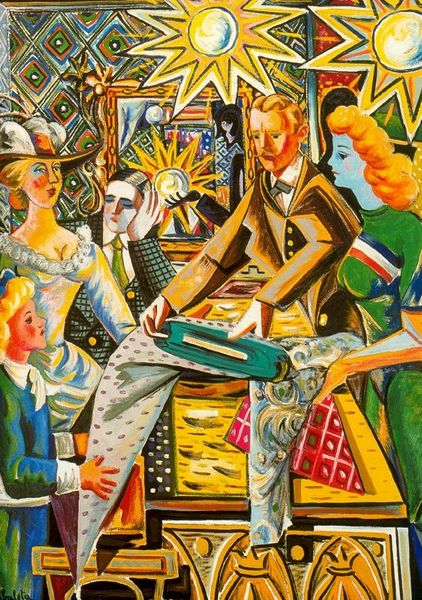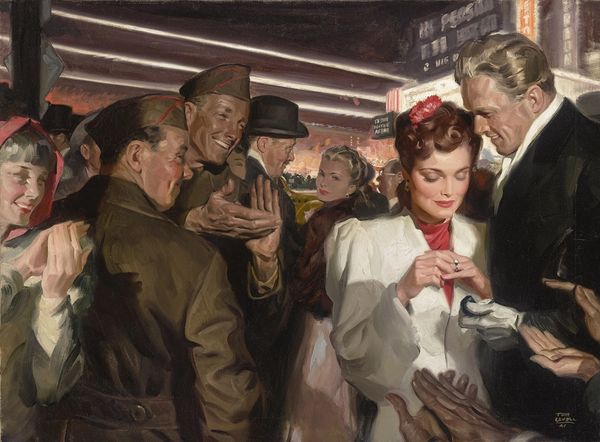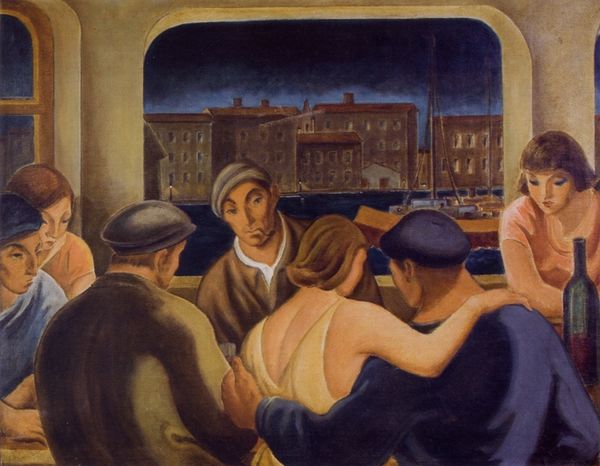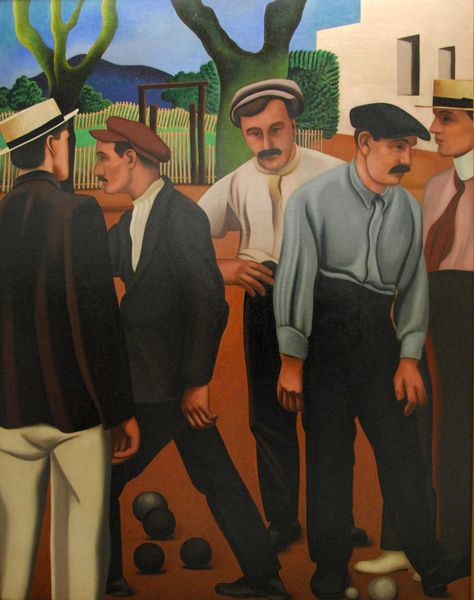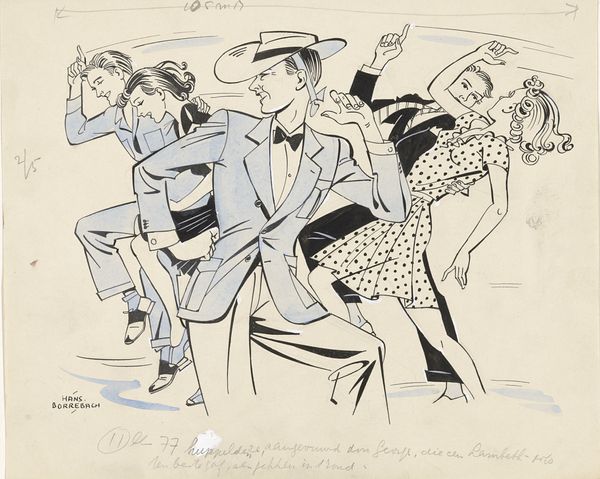
Arts of the City 1932
0:00
0:00
thomashartbenton
New Britain Museum of American Art, New Britain, CT, US
painting, mural
#
portrait
#
painting
#
figuration
#
social-realism
#
cityscape
#
genre-painting
#
history-painting
#
mural
#
modernism
#
realism
Copyright: Thomas Hart Benton,Fair Use
Editor: This is "Arts of the City," a mural painted by Thomas Hart Benton in 1932. It's packed with figures and cityscapes, but there’s a distinct tension in the air, a sort of dramatic unease. How do you interpret this work? Curator: What I find immediately striking is the layering of familiar American archetypes. There's a vaudeville performer, gangsters, wealthy patrons, a cherubic figure—each a recognizable symbol drawn from the cultural landscape of the time. Benton’s interest here is, to my mind, to juxtapose these powerful symbols of American life, isn't it? Almost like a theatre stage. What do you make of that contrast? Editor: I see what you mean. They're familiar types, almost like characters in a play. Is he trying to say something about class, perhaps, or social tensions in the city? Curator: Perhaps both, but the symbols aren't presented as opposing each other directly; rather they co-exist within the same frame, almost like they are mutually constructing a portrait of modern America. Do you also recognize how Benton used figuration and distortion as symbols for psychological disruption or alienation caused by modernisation and industrialization? Editor: Definitely, especially with how their faces are rendered; they seem exaggerated, caricatured even. I didn’t really make the connection to industrialisation before but, thinking about it now, all the pipes and metallic things give it almost a mechanical, dehumanising feel. Curator: Precisely. Each carefully selected detail holds a piece of a much larger narrative about a rapidly changing nation. It's in these combinations of symbolic elements that he reveals those broader narratives about culture. Editor: That's fascinating; looking at all of those figures crowded into one place with all the pipes now gives it such a layered narrative meaning to what Benton was intending to portray. It completely shifted how I perceive the painting, paying more attention to the underlying symbols. Curator: Indeed, art holds so much symbolic communication if we pay close attention to it.
Comments
No comments
Be the first to comment and join the conversation on the ultimate creative platform.
